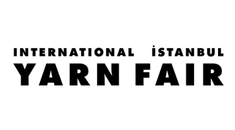THE IMPACT OF YARN ON KNITWEAR DESIGN

What are the key elements that affect knitwear design, and which ones are the most important? Choosing the suitable yarn can have a significant impact on the final fabric. Several factors affect yarn suitability, such as yarn type, thickness, color, and content. When using multiple yarn types in a knitwear fabric, the selection of each yarn and its ratio can directly impact the final product’s performance. It is crucial to stay updated with the latest trends to make the proper yarn selection. Trade shows and exhibitions can be extremely valuable for finding and discovering the most fashionable yarns and making the right choices.
The International Istanbul Yarn Fair will be held from February 22nd to 24th, 2024, offering knitwear producers a wide range of yarn selections.
Knitwear: Dating Back since the Common Era
Knitwear refers to fabrics produced by interlacing yarn loops of the same or other yarns in a particular direction. The production process of knitwear is called knitting or tricot. Tricot, also known as one-thread knitting, is a type of knit fabric produced by flatbed machines using movable yarns and fixed needles.
Although it is known that specific techniques such as thread making, weaving, and stitching have been used since 5,000-6,000 B.C., the origin of knitting is still unclear. Nevertheless, archeological excavations reveal that Central Asian Turks and Egyptians were involved in knitting during the 5th and 6th centuries B.C.
According to historical sources, the inception of the knitting industry can be traced back to the invention of the first knitting machine in England in 1589. This machine was a significant milestone, capable of knitting approximately 600 loops per minute and proving to be the knitting industry's foundation. The initial version of this machine was limited to producing flat fabrics, but over time, it evolved into a more sophisticated system that enabled the production of knitted parts in specific shapes.
We have been producing knitwear since the early days of the Republic.
Türkiye began producing knitwear in the early years of the Republic and subsequently shifted to fabricated production in the 1960s. In the 1980s, the knitwear industry began making export moves, and in the 1990s, it started spreading throughout Türkiye. Today, with the aid of high-production technology, we have achieved a remarkable position in the world market for knitwear production.

The type of yarn used in knitting has a significant impact on the design of knitwear.
Knitwear design is impacted by various technical details such as the type of knit, number of loops, and knitting settings, as well as the type, color, and composition of yarn. The yarn that is used and the ratios in which it is used also play a significant role in the final product. For instance, when a cream-colored single macaroni yarn of 2.2 Nm is blended with elastane, polyester, viscose, and cotton under the group of fancy threads, it becomes a thick, flexible, and drapey fabric due to the thick yarn. The polyester yarn adds a shine to the fabric, while the elastane yarn brings flexibility, and viscose provides softness.
In a different scenario, you can achieve a thick, flexible, and drapey fabric with a slightly piled by using 100% acrylic marl yarn and napping the yarn. On the other hand, if you use 100% acrylic chenille yarn, you can obtain a thick, rich, soft yarn that can extend both in length and breadth and has a velvety texture.
Fabrics used for knitwear production vary depending on the type of yarns used and the knitting techniques employed, consequently differing in terms of their areas of application. For instance, while a specific fabric may be appropriate for producing beanies, scarves, and sweaters due to the yarn type used, another fabric may be more suitable for home textile products.
Knitwear Production: a Process that begins with yarn and ends with Fabric
Knitwear design refers to the creation of fabric designs using different types of yarns and knits for specific areas of usage, generated through the weft knitting system using flatbed knitting machines. The process of knitwear design begins with the selection of yarn, which is crucial to the final design. The type of yarn used can affect both the design and the cost of the knitwear. For example, knitwear fabrics made from natural yarns are typically more expensive than synthetic yarns.
The production of knitwear involves a series of steps that start with yarn and end with fabric. The abilities of designers are directly influenced by the type of synthetic or natural yarn used. The characteristics of yarn, such as the fiber blend, number, nep, and filaments, directly impact its performance during knitting. Furthermore, the blend and number of yarn also affect the type of knitting machine used, the texture of the final product, and how it behaves after washing and ironing.
The design of yarn is affected by its appearance, quality, and suitability to the machine. It is also essential to carefully select the number of layers of yarns to be used, the color, blend, and thickness, delicately to ensure the best outcome.

 TR
TR
